Formative Assessment Design 2.0: Building Students Toward a Better DBQ by Focusing on Image Analysis
Context and Purpose
As I’ve written before, Document Based Question (DBQ) is critical for the Social Science student and provides the ultimate application of historical thinking and reasoning. It requires that students read various sources and understand them such that they can cobble together enough information from multiple sources to respond to a question. Ultimately, transference to the contemporary world is the goal, either as a powerful tool for interpreting contemporary events or applying this skill to the workplace.
The DBQ is not often used in the average Social Science and History classroom. Advanced Placement (AP) classes use them as part of the learning and assessment process to prepare students for the AP Exam. Nevertheless, the average student and curriculum ought to use more DBQs—however challenging they may be. The typical DBQ asks a higher order thinking question that can only be answered by evaluating various sources, typically maps, images, or written statements from a particular historical period. Students write a response to the prompt by using the documents as evidence for an argument or historical claim. Students then write a response to the prompt.
Depending on the designed outcome, the DBQ is the ideal assessment. Typically teachers want their students to learn how to synthesize multiple pieces of information into a coherent argument, usually around other reasoning skills like Cause/Effect, Continuity/Change, and Compare/Contrast. A typical question in this order might be “Using the following documents, evaluate the extent to which European perception of Native Americans changed or stayed the same from 1500-1850” These types of questions assess a variety of skills and competencies, but they are time-consuming to create and grade.
The DBQ requires analytical, reading, and writing skills, among others. It is unrealistic to assume students have each one of these skills already. Like math, one missing skill can lead to a critical mistake that calls into question the entire problem. To that end, we need to make sure that each skill is given proper attention.
Perhaps one of the most fundamental skills that need to be taught is the ability to read images. Different from reading a text of words, students need to practice reading the text of political cartoons, photos, graphs, charts, and maps. From these sources, students should ultimately be able to identify the image subject, specific content, argument, and finally, the bias or point of view (POV) of the author. Formative assessments on these “essential skills” will be vital for student success.
Assessment Instructions for Learners
Students will be provided with the following instructions and take part in the learning assessment:
Class Activities and Learning Agenda
• You will first share your prior-knowledge of Native Americans and their relationship with Europeans by sharing with your peers in a group Flipgrid. • You are free to talk about anything you know.
• You will then take part in a class observation of a few etching of Native
• Americans by contemporary European artists from 1500-1850. These images are part of a Keynote presentation entitled NOBLE PEOPLE OR BEASTS? AMERINDIANS THROUGH THE EUROPEAN EYE — A Critical Thinking Analysis. For each image displayed, you will shout out nuances, details, and reflections on the pictures shown. Your teacher will prompt you to reflect on the values and ideas of Christian Europeans. Consider what religious ideas and structures they hold. What figures (like the motif of Adam or God creator) were essential to their belief systems?
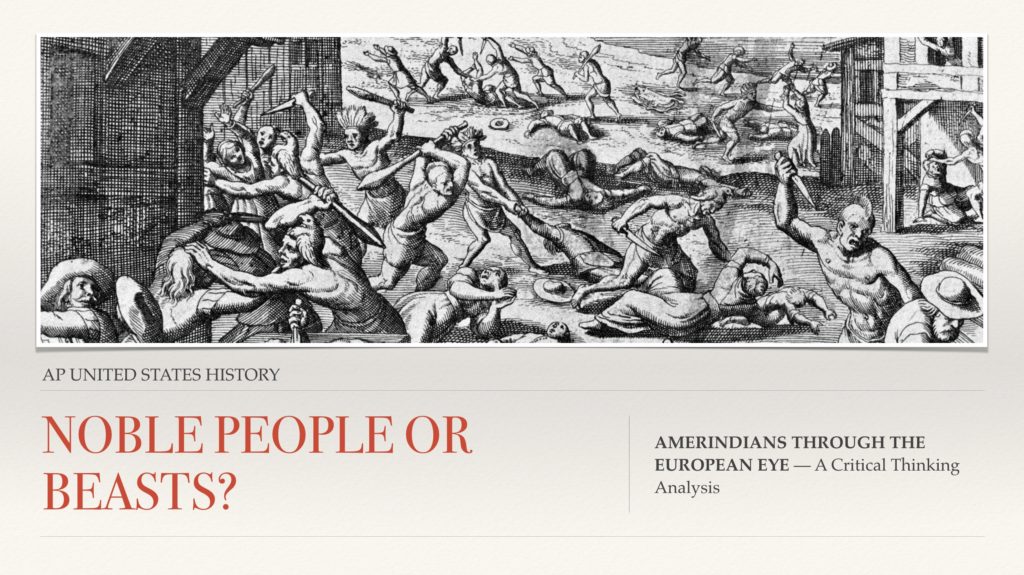
• With a partner designated by your teacher, you will choose one of the following images to analyze in the same manner as done above with the whole class. Students should consider the author of the image, the audience of those consuming the image, and the specific details associated with the image (figures, actions, tone, religious imagery, etc.).
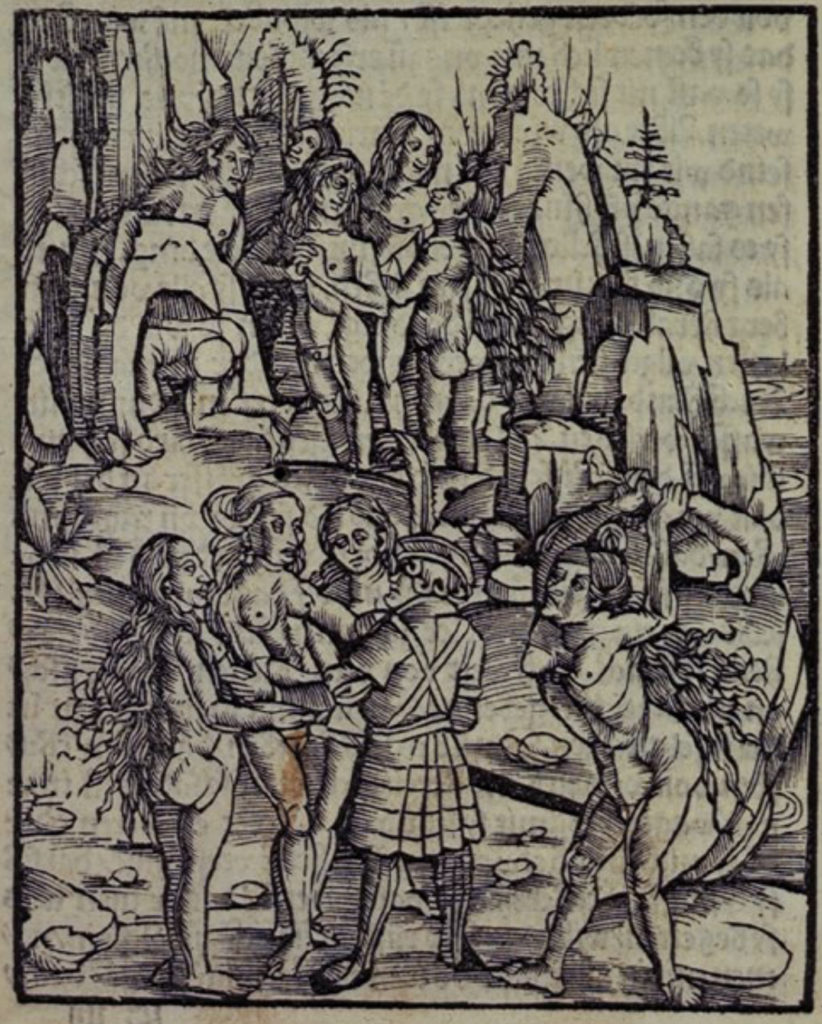
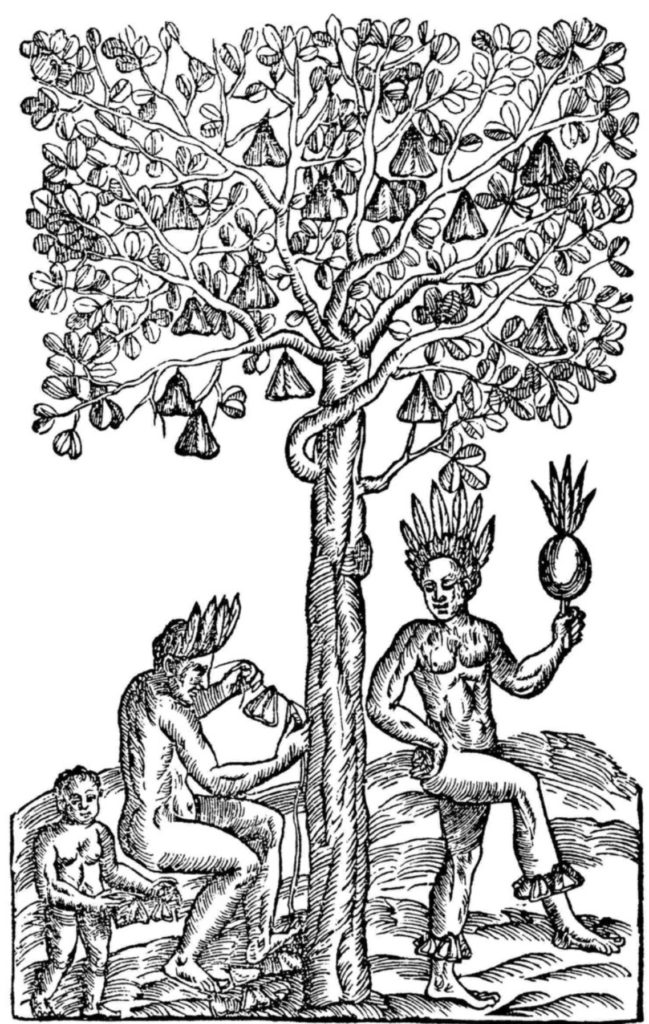
• We will then work on a collaborative board for each image using Padlet in which each group (and others who want to help), can write key words, observations, and ideas under each picture.
• After a quick discussion of our work on the images, we will read a brief primary source passage on how Europeans viewed Native Americans from 1844, an excerpt taken from a children’s history textbook.
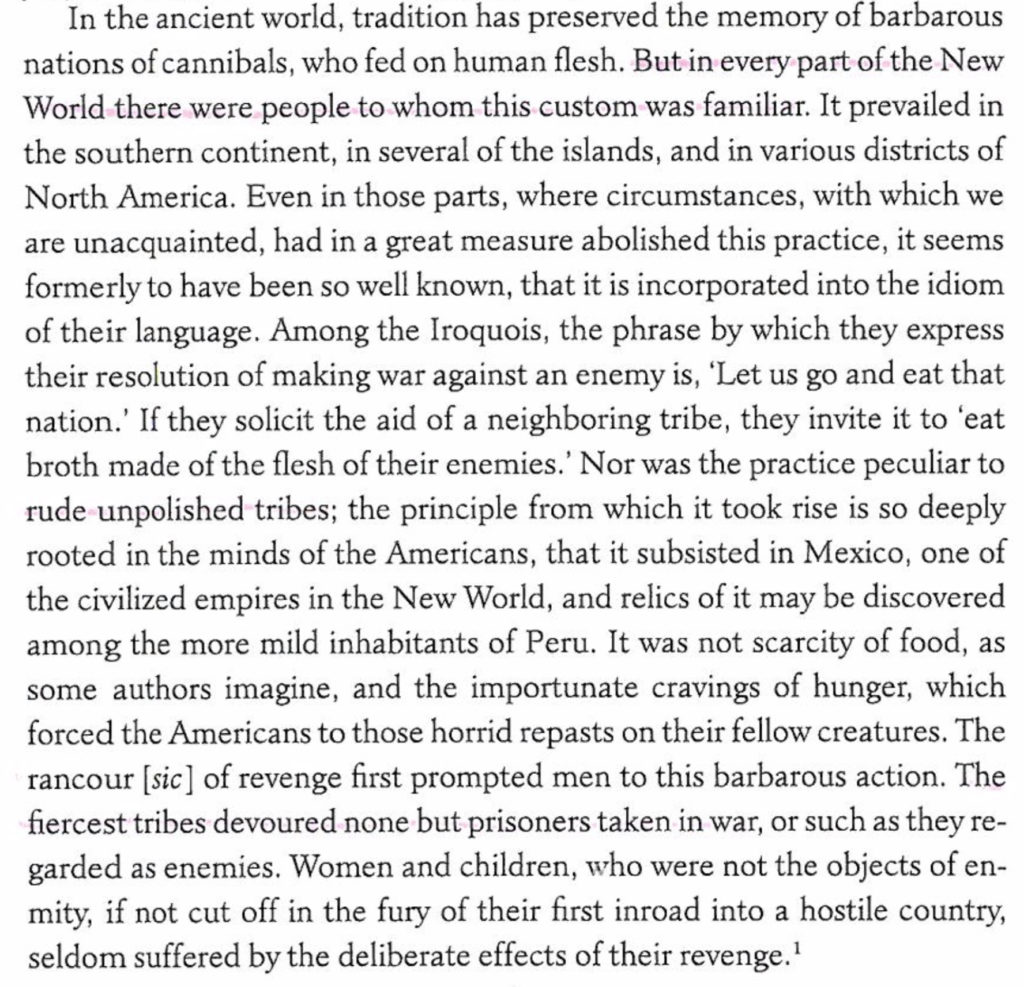
• (SIDE QUEST) For those student teams whom both do not know how or have not used Flipgrid or Clips before, you get a little extra boost! I will work with your team individually to get your up to Flipgrid-speed (and discuss your image a little…shhh, don’t tell).
Assignment Instructions
In collaboration with your partner and through creative use of Clips and Flipgrid on your iPad, respond to the following prompt using evidence from the sources discussed in class, with your partner, or for the “extra” ones out there, your own discovered sources (not required, but if you are up for the challenge, let me know!):
Evaluate the extent to which European perception of Native Americans changed or stayed the same from 1500-1850
Assignment Submission
• Make sure that your video is under 5 minutes (time limit on Flipgrid)
• Make sure that you pushed your creativity.
• Make sure that you pushed your critical thinking.
• Make sure that you used all the documents (images, texts, etc.)
• Make sure that if you have questions, you ask!
• Make sure that you have fun!
Feedback and Instruction
Upon submission of the Flipgrid, the videos will be placed in a holding spot awaiting teacher evaluation and feedback. I will give verbal video feedback for each video, highlighting specific aspects of the content and process of learning and use of technology for creativity.
Students will be free to change any content or technical/creativity aspects of the project after I give the feedback. I can also give further feedback if so needed and/or desired.
Once the video is complete to your liking, your Flipgrid video will be posted to our class page where students will watch and evaluate each other’s amazing work.
As a formative assessment, the point is that students are growing and learning through the process. The following skills (as well as some content knowledge) analyzing images, using more than one piece of evidence, and using evidence to respond to a question. These same skills will eventually be used and applied with other types of media, graphs, and charts in future assignments.
